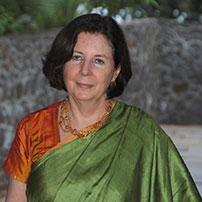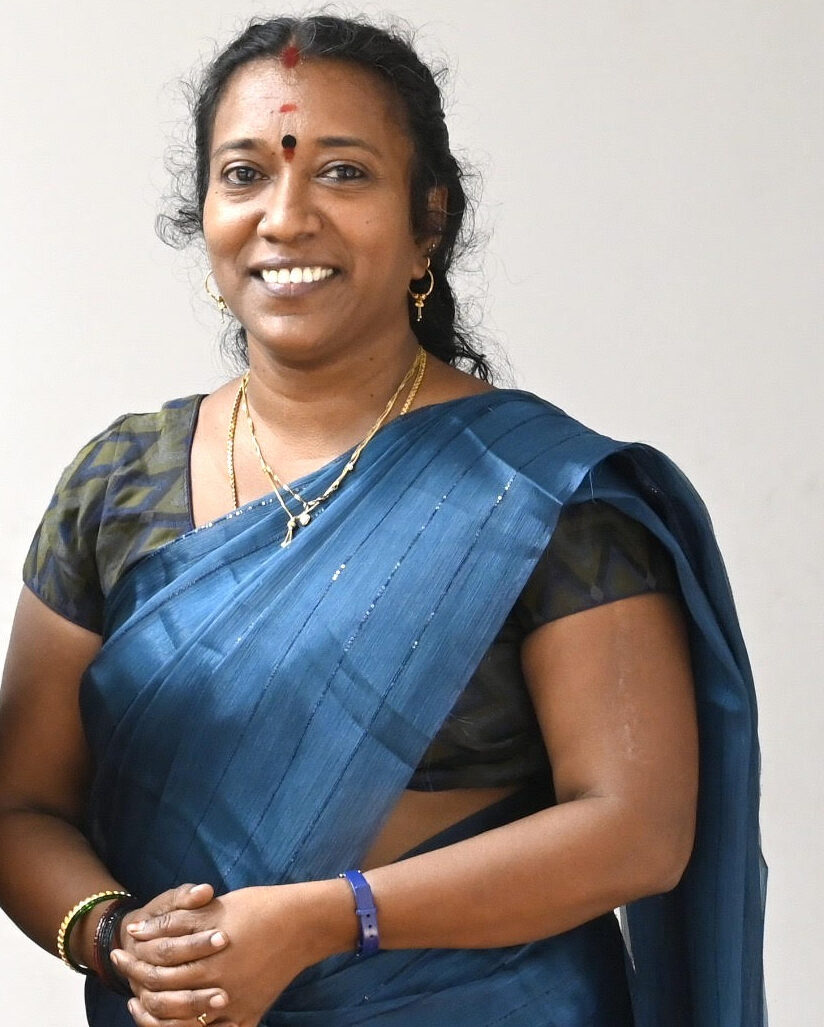Craft in South India: A Legacy at the Crossroads
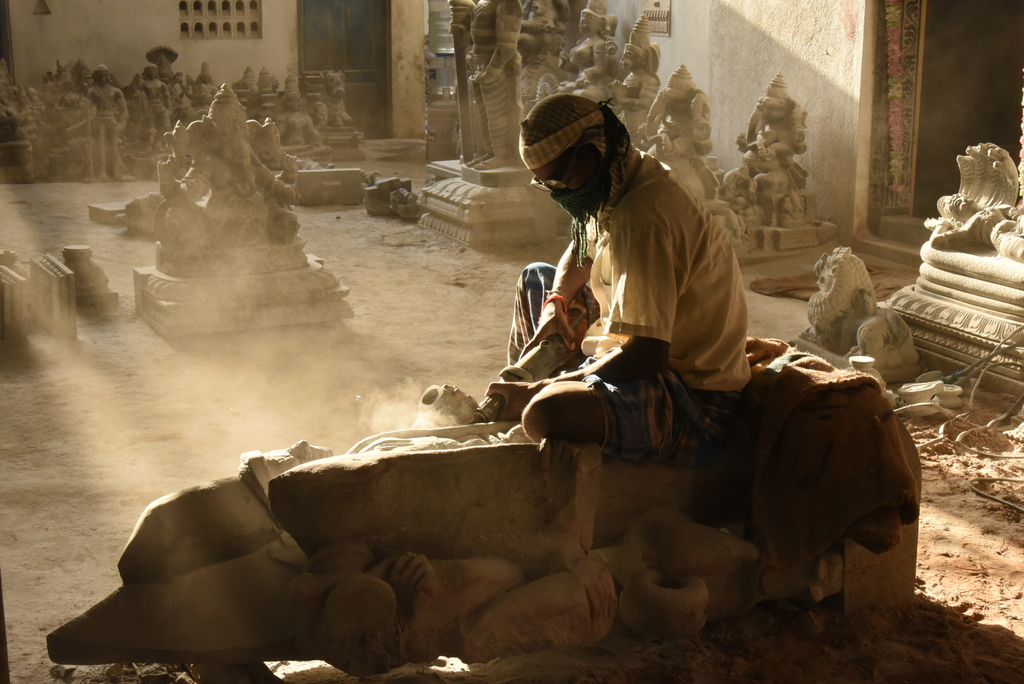
Indian crafts and their makers are at a turning point in history. Are their skills and talents still relevant in this digitised 21st century? This is the question many of their sons and daughters are asking, as the future of crafts in India largely depends on them. This article explores that question for the crafts of South India.
South India is rich in crafts, and many of the craft traditions are religion-based or symbolic. Until recently, the older generation of craftsmen working on religious crafts, whether a god made in clay, bronze or wood, felt challenged to do his best because he was doing it for his God. It was this attitude that has given us fine craft up to the present.
Religious fervour in the viewer also alters the lens through which religious art is viewed.
Do the viewers revere the beauty of the bronze icons of their Gods? Do they stand in awe in front of the elaborate hand-carved chariot which pulls these gods through the streets around the temple? When they pray at a temple, do they actually see and admire the beauty and intensity of the sculpted stone images adorning the temple niches? Or do these images only give rise to an intense feeling of devotion which blinds the devotee to material beauty? Will this “ability to see” change with time? Unless it does, it will affect the quality of not only religious crafts but all crafts of the future.
Hindu temples are being built all over the world now. The stone images, the columns and decorative walls are manufactured primarily in Mamallapuram, Tamilnadu. The finishing touches are still given by hand, but much is being done by diamond-tipped machine tools, which are still controlled by the hand. This is keeping Stonecraft alive and will do so well in the future.
The same goes for the making of bronze idols, a trademark of craft (which I would rather call art), particularly of Tamilnadu. Bronze icons are also made for temples abroad and sold to temples and well-to-do individuals throughout India, usually, but not always, for the prayer room in the home.
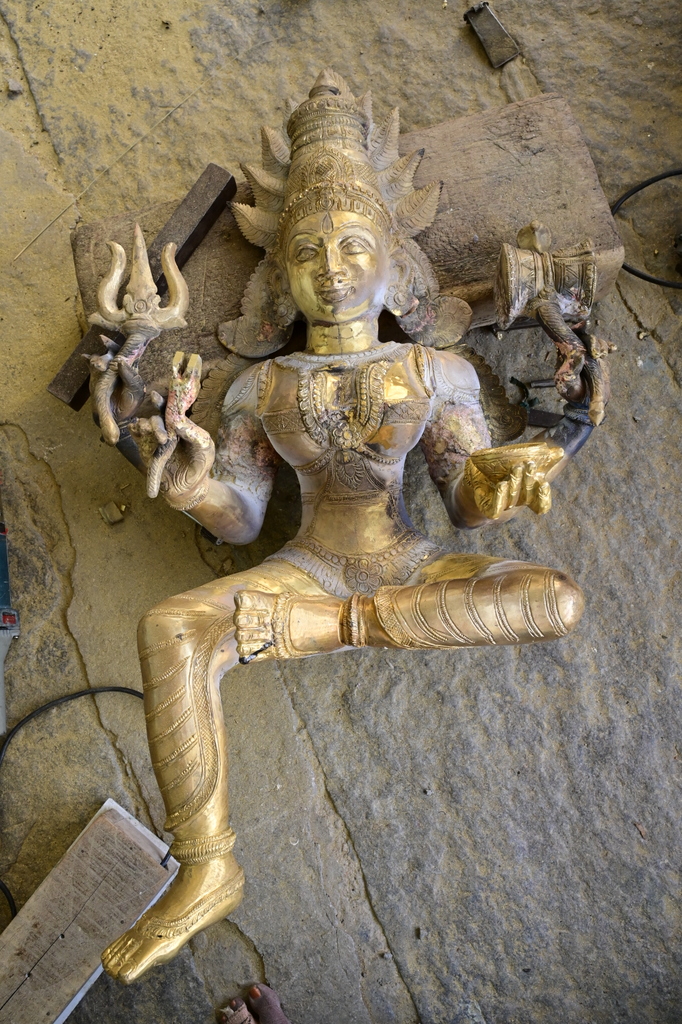
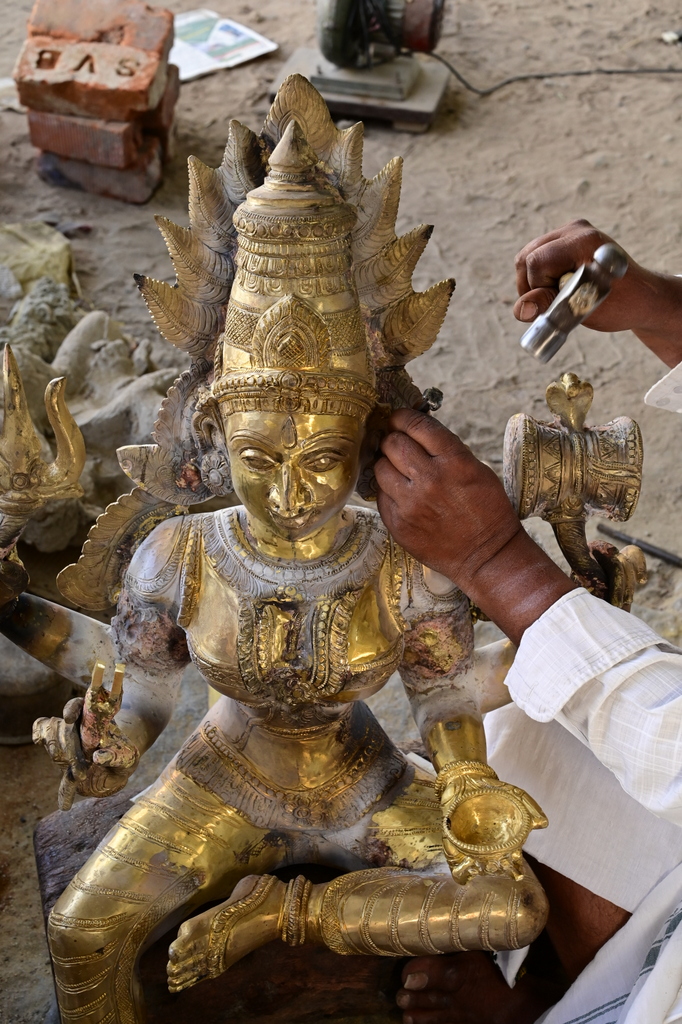
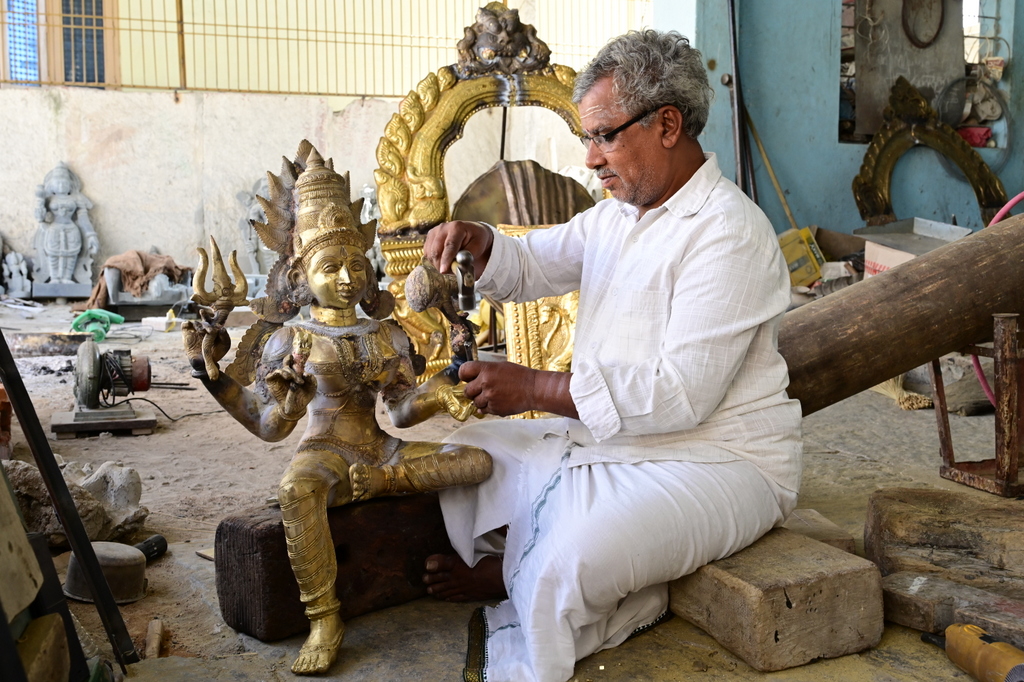
Bronze figures in Tamilnadu, primarily from Swamimalai, are made through the lost wax method, where the figure is first formed in wax, then covered in clay, placed in the ground with an orifice opening at the top in which molten metal is poured, replacing the melted wax. It is a laborious procedure. When cooled, the figure is removed from the ground, the clay container is broken, and the idol is removed and then chiselled and polished. In North India, these exact figures are made from moulds. They are lighter and cheaper but lack the aesthetic qualities of the hand-crafted ones. This will create competition between those icons made with the lost wax method and those made from moulds, which will eventually see changes in both types of manufacturing.
Woodcraft has various categories. The makers of the carved images for chariots (rathas) have diminished in number. Those who continue carving specialise in individual plaques of deities, which are coloured and sold at exhibitions and to agents throughout the country. Other wood carvers have moved to companies making special furniture. In villages, carpenters are still needed for basic household items like beds, doors and windows and agricultural equipment.
These three groups of craftsmen, particularly those from Tamilnadu—bronze makers, stone carvers, and wood carvers—have learned the modern motto of marketing: A cluster of shops selling similar products or craftsmen has a far greater chance of making a sale than isolated individuals.
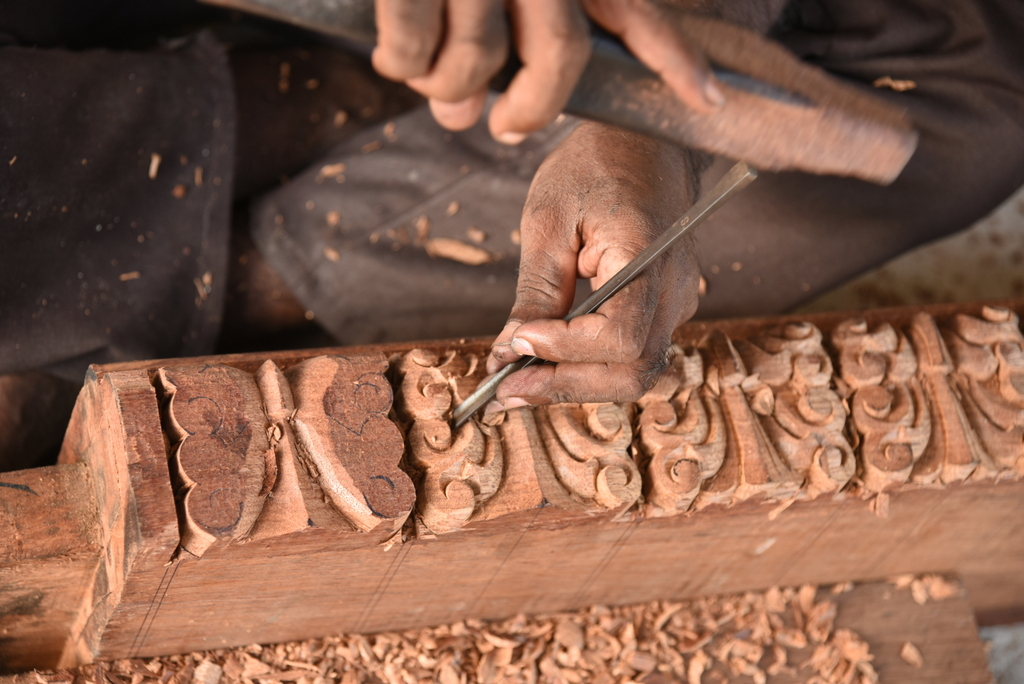
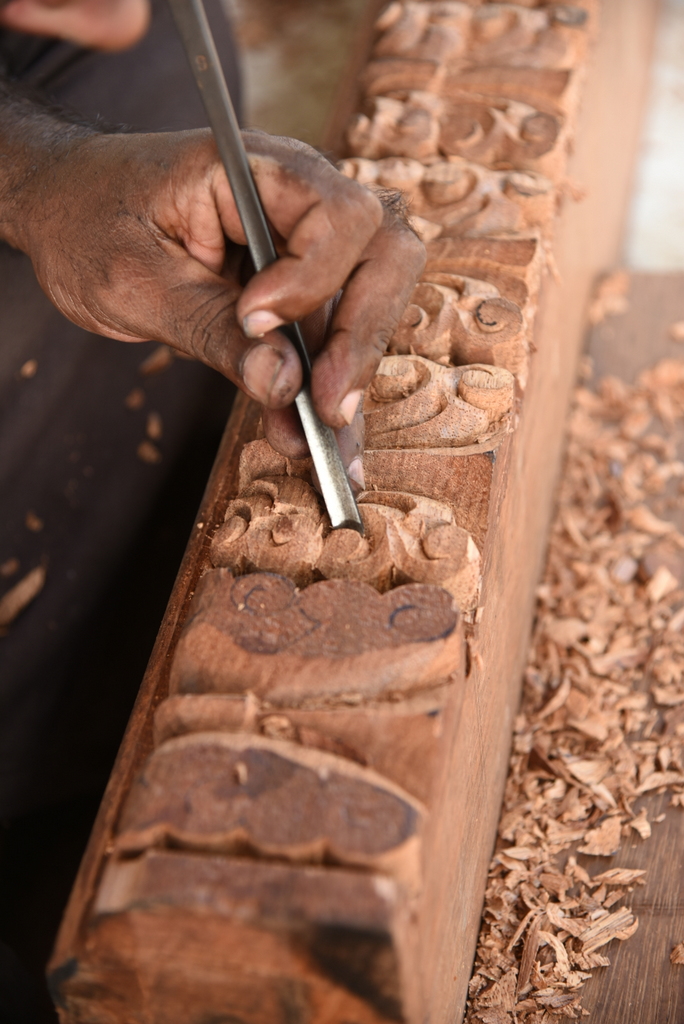
Besides their connection to religion, crafts have always been promoted as identity markers for an Indian. This began even before independence as Nehru and his political friends sought symbols to unite a fragmented India. In the decade after Independence, the Textile Ministry founded the Office of the Development Commissioner of Handicrafts. But there was confusion even then about the role of crafts in society, including handloom textiles, and how crafts should be classified. How do you classify hand work? In the 80s, Pupul Jayakar took Indian crafts to the world through the Festivals of India to great acclaim. After that, with all the media coverage, craft became noticed in India. That provided the impetus for short term craft exhibitions and sales, such as the Surajkund Mela, the largest festival of crafts in India held outside Delhi each year. This was followed by exhibitions, mainly funded by the Office of the Development Commissioner Handicrafts, in metros all over India. These exhibitions helped bring craft to the broader urban public, making them accessible. It has also given the viewer the opportunity to refine his or her way of looking as he/she seeks to evaluate what he or she wants to buy. But how has that affected craft and the makers?
Many of the makers of craft seen at these exhibitions cum sales are from villages. These sales allow them to meet the urban customer, an unknown factor for the craftsman until recently. It also allows the urban visitor to see many crafts. The drawback to these exhibitions is the market. Most people set limits on how much they can afford to spend on craft, so the range becomes dumbed down for the opportunity to sell as much as possible. Expensive craft sells much more slowly, so, as we have seen, eventually, the general market diminishes the type of crafts available.
However, there will always be fine craftsmen, and artists, really who are drawn by passion to do their best. They will persist no matter what, but they may become fewer in the future. On the other hand, new craftsmen will appear with new ideas and an understanding of new techniques. Some will work individually, and others will set up mass production to increase the quantities of craft they can sell. Many will have their eyes on an international market because money plays a large role in the perception of success. The Indian buyer, however, will continue to be a major catalyst for the future of fine craft. The extent to which individuals appreciate craft and have an eye for exceptional talent can inspire the craftsman. This may seem almost inconsequential, but it is very important for the validation and self-esteem of the craftsperson.
Villages are quite different from the urban milieu, as is the position of the artisan in these villages. Is he respected? Does his work bring him the remuneration he needs to live a decent life? Is his work appreciated? These are the key questions in a craftsman’s life. For many, the skills of making have been honed through childhood in association with a father and grandfather. The artisan is an integral part of his village, though he may have to migrate to a larger village if he can not make a living in his natal one. He may not just do craft. If there’s a problem with some agricultural equipment, he may be called to repair it, even if he’s a bronze caster. He is needed for festivals which require all kinds of craft. If he is a Visvakarma, a caste which sees itself as equivalent to Brahmins, but outside the regular realm of caste1, he has dignity and respect. But only the makers of bronze, stone, gold jewellery, blacksmiths and wood carvers are Visvakarmas, and it is a hereditary caste. The Viswakarmas were the makers of the earlier grand temples, mosques and monuments of the past[1].
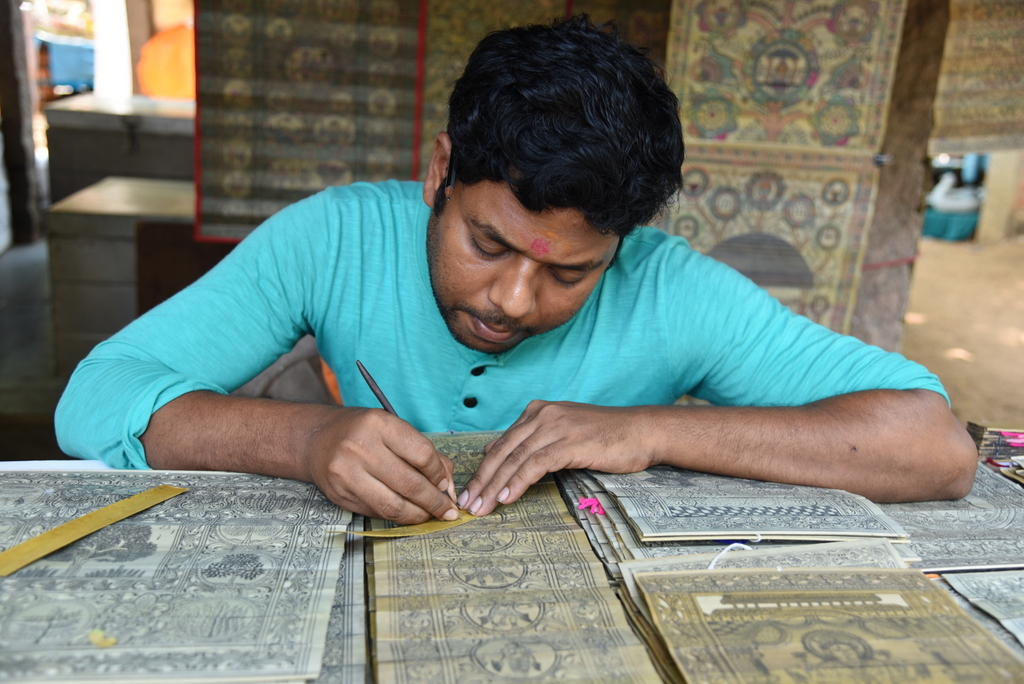
This past sheds light on the potential of the future. Up through the 16th century, kings and nobility envisioned showing their power or wealth to the world through the buildings, mainly temples, basadis (Jain temples) and mosques they erected. They inspired and paid the craftsmen well. They brought craftsmen, later called the Vishwakarmas, from all over to work together to build these magnificent structures. They had a vision, and they used it to incentivize the craftsmen. In a 13th-century treatise from the Sun Temple in Odisha, all the groups of craftsmen were enumerated. They came from all over. One group from the Madurai region was not up to par, so they were returned. They had standards.
But after the wealth disappeared with colonization, no royals or merchants had the money or vision or desire to build for the future or even to maintain the monuments of the past. The Viswakarmas went back to their villages. They began working individually within the confines of village life. The isolation from the centre of activity and each other diminished their ability to rise. They contented themselves with the small craft items needed for villages, festivals, temples, and individuals. They made bronze items with moulds for pujas. Only the more elaborate full figures were created using the lost wax method, mainly made by artisans residing in metros.
But fashion is fickle, and that applies also to craft. Some crafts eventually lose their earlier market because they are no longer sought or appreciated. Artisans are slow to understand the reasons behind this, or if they do, they do not know how to proceed to change. Making a craft is a process that has been followed for decades or centuries, and a change means making a change in the process. That is why craftsmen find change so difficult. How do you make a contemporary product that the market needs or wants? A new vision is needed, but it must be within the skills and repertoire of the craftsman; otherwise, it will not work. The children of craftsmen have a wider exposure to the world through television, cell phones and YouTube, and many are now educated. The vision should come from them, but this will happen only when the children come to appreciate the work of their parents and see a future in it. This is problematic but not impossible. Well-funded and organised training institutes with excellent instructors can provide the incentives and skills for children to learn new ways of looking at craft, combining new processes and materials.
In the past, the villages were the fulcrum of artistic creativity. With the migration to cities, the villagers carried their artistic traditions with them. They built their shrines and temples; they conducted their festivals. This inspired art in the cities for cinema, paintings, music and dance. But it diminished the villages. Today, the world is changing. Covid and climate change are significant factors. With knowledge now available everywhere and the promise that this connectivity will steadily grow until villages are on par with urban centres, there is the promise that the future will be bright and creativity will flourish again in rural India. The factors are building up for this, but it will take several decades. It will also take the grounded sensibilities of the rural villager, who continues to know his connection to the earth, to filter down to his/her children.
References
- Ramasamy, Vijaya, ed. In search of Vishwakarma: Crafting Indian Craft Histories. Primus Books, New Delhi, 2019.

